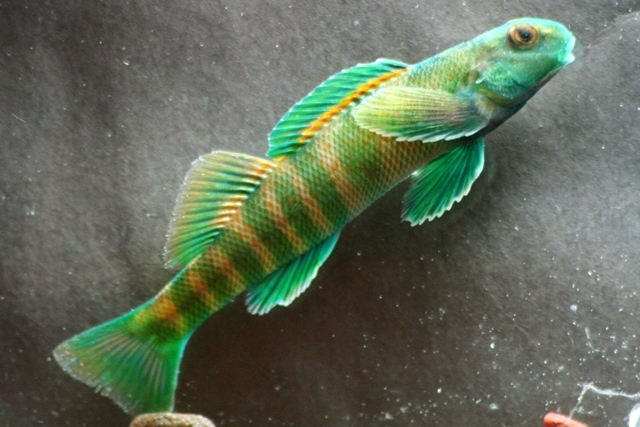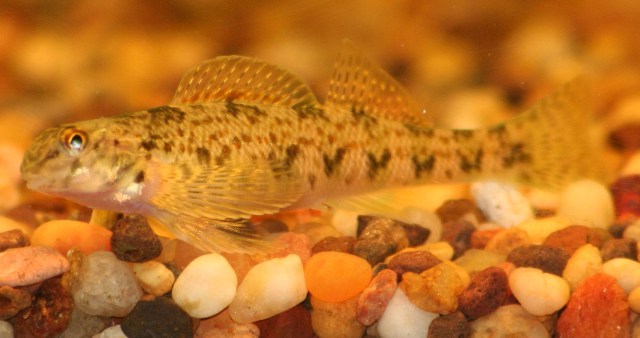Greenside Darter
(Etheostoma blenniodes)


Breeding male (top) greenside darters, like many species of darters, display very different color patterns than those of females (right), juveniles, and non-breeding males.
Description
Greenside darters have a blunt rounded snout that sometimes protrudes beyond the tip of the upper lip. They have a very small sub-terminal (ending below tip of snout) mouth. They are a rather long and slender species of darter and have large rounded pectoral fins. Females, juveniles, and non-breeding males have 4 to 10 "v" or "w" shaped marks along their side. On breeding males the 4 to 10 "v" or "w" shapes become 4-7 dark green bands. Their fins and head can also be bright green and they have a red band along the base of their first dorsal fin. Greenside darters closely resemble banded and johnny darters. Banded darters have a similar color pattern but do not have as long and slender of a body shape, only reach a maximum of 3 inches, and do not have a bluntly rounded snout that overhangs the upper jaw. Johnny darters even when breeding have no bright colors on their body and are smaller than greenside darters.
Habitat and Habits
Greenside darters are found throughout Ohio in both the Lake Erie and Ohio River drainage. They are found in medium to large sized streams and historically were found around the Lake Erie islands before the invasion of the round goby. When breeding greenside darters use fast deep riffles. The rest of the year they can be found in slower water, even in pools, especially near emergent vegetation such are water willow or lizards tail.
Reproduction and Care of the Young
Adults spawn in deep fast flowing riffles in April when water temperatures are between 55 and 65 degrees Fahrenheit. The eggs are attached to strands of filamentous algae and aquatic moss. The male then defends the area where the eggs were laid but does not provide any care for the young after hatching. Young greenside darters spend much of their time in shallow water with a sandy substrate often in or around emergent vegetation.